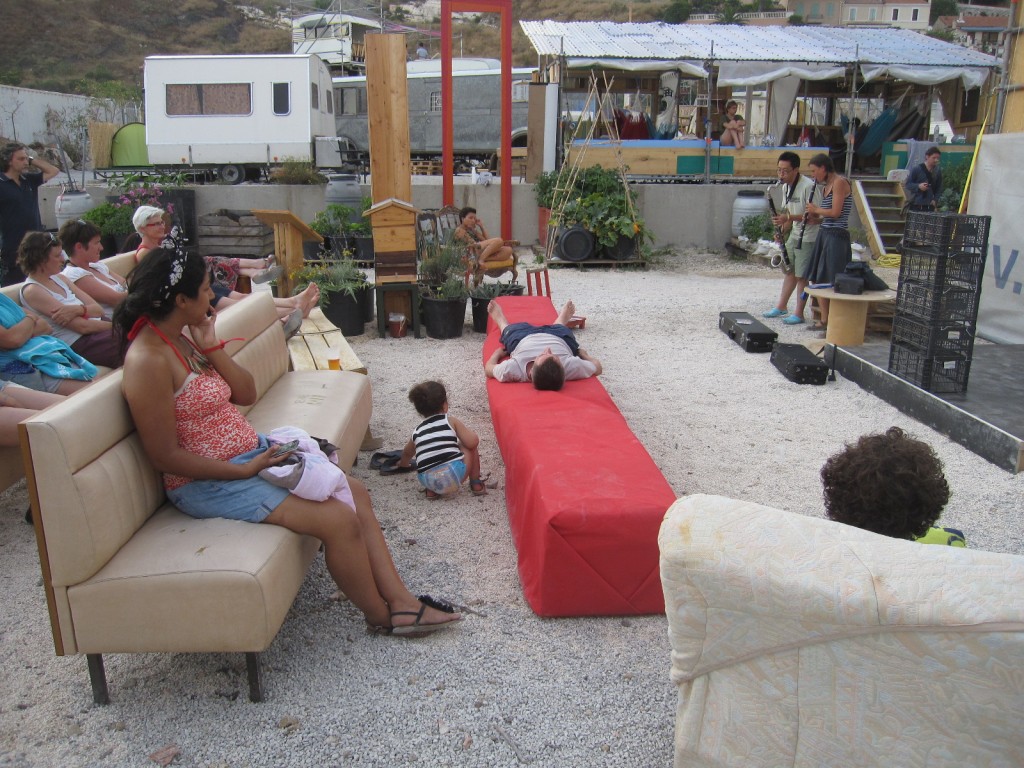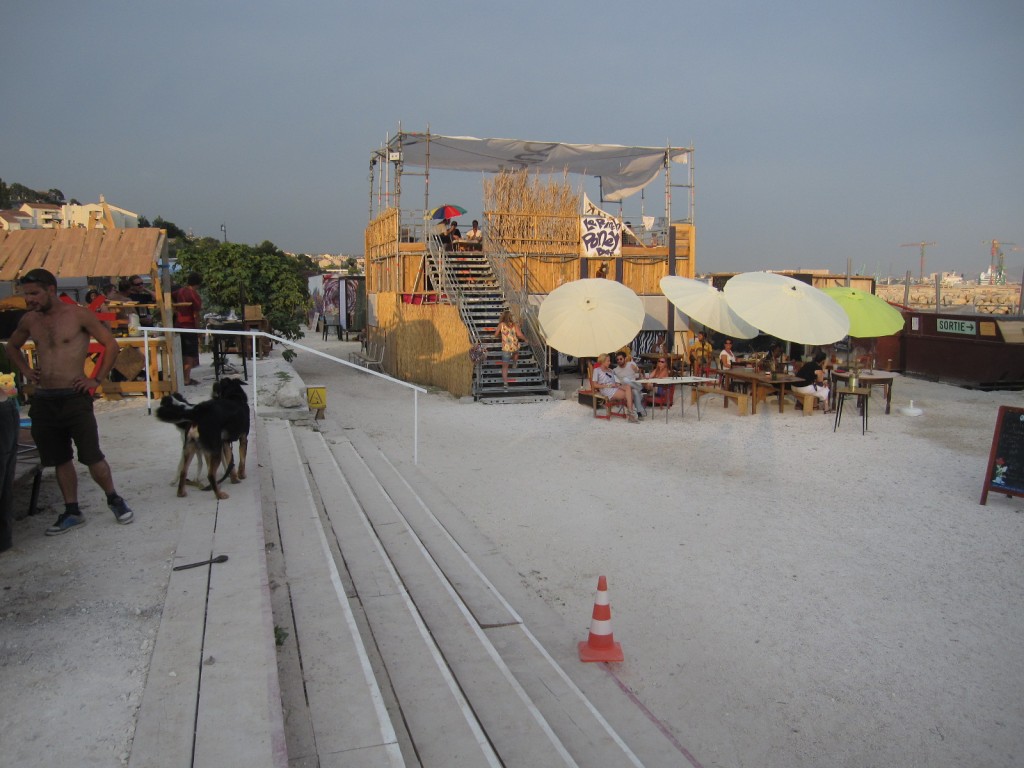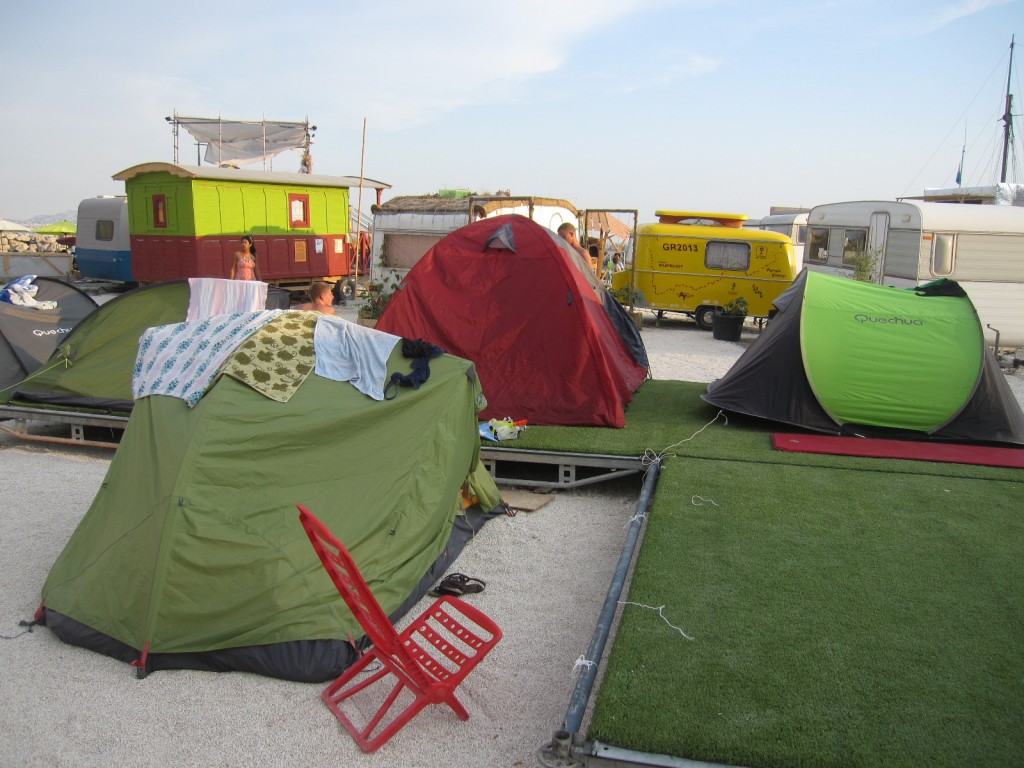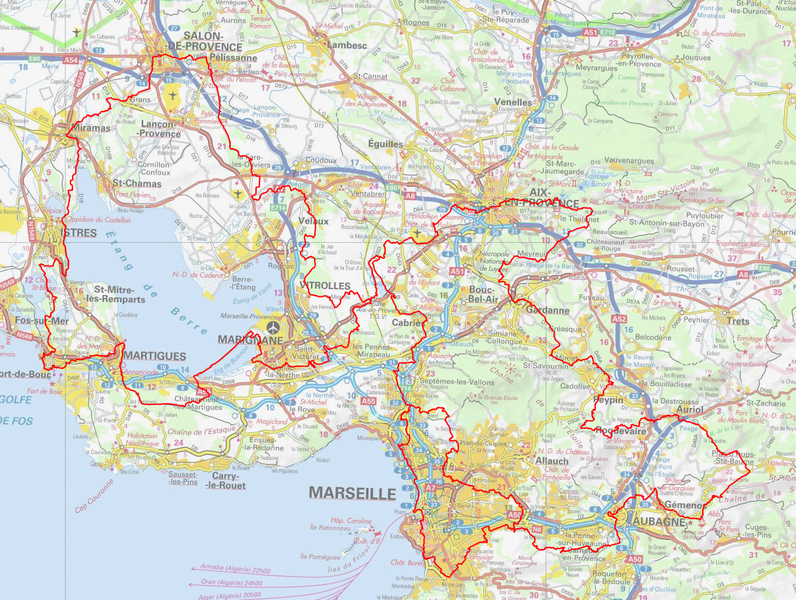This column aims at discovering harbours from a landscape perspective, which means extending our view beyond the delimited harbour area towards the surrounding landscape of which the harbour is a constitutive part. Let us take a detour to Marseille, and experience the story of a camp site and a hiking path within this city’s particularly heterogeneous urban landscapes, including a multitude of port and port-related areas, active or under transformation.
In the year 2013, Marseille, one of Europe’s largest port cities, has been celebrated Europe’s cultural capital. In actual fact, not Marseille alone but Marseille-Provence, the city and its metropolitan region, reaching far beyond the circle of calcareous hills that surround the city, the old port and the bay of Marseille. Since the 60s the port operates its major areas of big bulk and container shipment in the nearby Rhone delta, on the flat lands between the Mediterranean coast and the shores of Lake Berre, a hub of the French petrochemical industry. Since then Marseille has developed a metropolitan practice that includes this region. It comprises the airport, located at Marignane, the new high speed train station, at Vitrolles, and also the university city of Aix-en-Provence, at the foot of the Sainte Victoire hill. However, this concept of an extended urban landscape has not yet been popularised. People in Marseille tend to see the limits of their city in the circle of hills around it, as a world of its own, “la planète Mars” as the local rapper band of IAM termed it.
The challenge of the cultural capital of Marseille-Provence 2013 was to promote the concept of this bigger picture. The show started off from Marseille’s waterline, of course: the Old Harbour was pedestrianised and received an elegant pergola (arch. Sir Norman Foster), the first piers of the industrial port were taken over by the city and now host two important museums, the MuCEM (arch. Rudi Riciotti) and the Villa Méditerranée (arch. Stefano Boeri). Next door, one of Europe’s largest urban development operations of run-down port districts, Euroméditerranée, has accomplished major renovation work and sets out for its second phase of urban renewal. All these achievements were driven by powerful actors, the French state, the region of Provence-Alpes-Cotes d’Azur, the city of Marseille. Most interestingly, a couple of less institutionalised actors also deployed their power to demonstrate that there was more to discover in the cultural capital than institutionalised culture only, namely the port’s and the metropolitan region’s landscape “as found”.
Concert space at YesWeCamp. (Photo: Lisa Diedrich, 2013)
On a vacant lot at Estaque, the northernmost port area in town, a temporary village came into existence from May to October 2013 under the auspices of the YesWeCamp association, calling in various professionals and amateurs to “camp together” to realise a shared space of multiple use and ongoing performances, recalling events like Woodstock or the Burning Man as well as movements of protest against authoritarian policies such as Occupy or the spontaneous settlements of Madrid’s Plaza de la Puerta del Sol. Platforms for tents for cultural capital visitors were offered next to various experimental huts, repainted camping cars, a concert stage, a cinema, a kiosk, a barbecue place, kitchen gardens, information booths, ecological showers and dry-pit toilets, all freely installed upon a site organised by architect Vincent Hannoun. Creativity had no limits here, and beauty was unfolding in between the vernacular, the excentric and the transitory. YesWeCamp displayed how a simple abandoned port platform can mutate into a vibrant urban port landscape and inject life into the adjacent district – why wouldn’t we yeswecamp every summer in the port landscape of Marseille?
Kiosk at YesWeCamp. (Photo: Lisa Diedrich, 2013)
Tents and the yellow GR ® 2013 caravan information booth at YesWeCamp. (Photo: Lisa Diedrich, 2013)
So far the hands-on port city experience can be re-enacted feets-on along a new hiking trail, equally created for the cultural capital year 2013 and advertised in one of the caravans of YesWeCamp. Called GR ® 2013, this trail refers to the popular French “Chemins de Grande Randonnée” (GR) that span a network of hiking paths across the country and promote its natural landscape beauties. The GR ® 2013 reformulates this concept in leading a 365km long path (as many kilometres as days in the year 2013) through the metropolitan and port landscapes of Marseille and Lake Berre, crossing 38 communes and 5 regional parks, allowing for a total of 20 days of hiking. The trail has been initiated by publisher Baptiste Lanaspèze and elaborated by an association of hiking artists. The marking is the same as on an ordinary GR but the beauty revealed is unsettling: comprising port feeder roads, sun-exposed parking lots, the thorny macchia, high rise ensembles of the 60s, overgrown brownfields, stunning views, suspicious smells. It demands a good deal of physical skills as well as aesthetic open-mindedness. Camping and hiking – that is exactly what we need to experience harbours and hinterlands from a landscape perspective!
Itinerary of the GR ® 2013 hiking trail through the metropolitan landscape of Marseille-Provence. (Source: www.mp2013/gr2013)
References
www.yeswecamp.org
www.mp2013/gr2013
Head image: YesWeCamp site on a port platform in Estaque, Marseille. (Photo: Lisa Diedrich, 2013)



